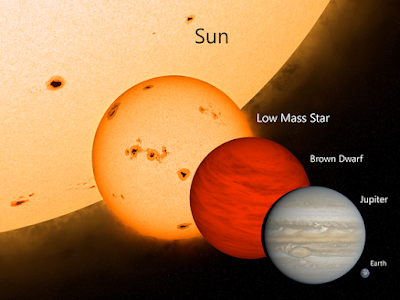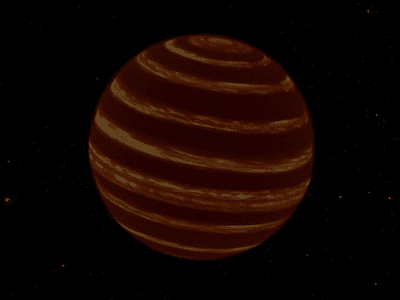Why are Brown Dwarfs are Called 'Failed Stars'?
Failed Stars: Dim Lights in the Stellar Neighborhood
The universe is a place of grand spectacles, with colossal stars burning bright and supernovae erupting in explosive splendor. But lurking in the cosmic shadows are celestial objects dubbed "failed stars," a term not meant to diminish their existence but to describe their unique place in the stellar hierarchy. These objects, known as brown dwarfs, may not fulfill the classic image of a blazing star, but their existence sheds light on the delicate balance of forces governing stellar formation and challenges our understanding of the boundaries between stars and planets.
Mass Matters:
At the heart of the "failed star" title lies the concept of critical mass. For a celestial body born from a collapsing gas cloud to ignite and truly become a star, it needs sufficient mass to sustain the sustained nuclear fusion of hydrogen in its core. This fusion process generates immense heat and pressure, powering the star's luminosity. Brown dwarfs, however, fall short of this crucial threshold. While they can be several times more massive than Jupiter, the largest gas giant in our solar system, they lack the heft to initiate sustained nuclear fusion.
 |
| Brown Dwarf and low mass star |
Lights, Dim and Cool:
The consequence of this shortfall is evident in their luminosity. Unlike stars, which shine brightly due to nuclear reactions, brown dwarfs generate their faint glow primarily through the gravitational contraction of their internal gas. This process releases comparatively little energy, making them much dimmer than even the faintest true stars. Their temperatures, ranging from a few hundred degrees Celsius to a few thousand degrees, pale in comparison to the millions of degrees found in the Sun's core.
Between Worlds:
This intermediate nature of brown dwarfs raises fascinating questions about their classification. Are they oversized planets or undersized stars? The answer rests on a nuanced understanding of the factors that define a star. While mass plays a vital role, the ability to sustain nuclear fusion in the core ultimately separates true stars from their dimmer cousins. Nevertheless, brown dwarfs share some characteristics with both planetary and stellar objects. They lack the solid surfaces of planets but also exhibit some planetary features, such as weather patterns and auroras.
 |
| Brown Dwarf the Failed Star |
Numbers Tell a Story:
Brown dwarfs are surprisingly common, estimated to outnumber stars in the Milky Way by a factor of ten. Studies suggest that our galaxy alone may harbor hundreds of billions of these celestial denizens. Their prevalence underscores their significance in the overall stellar formation process and suggests that the line between stars and planets might be blurrier than previously thought.
Comparing Brown Dwarfs with Stars and Planets
| Feature | Brown Dwarf | Star | Planet |
|---|---|---|---|
| Mass | 13 - 80 Jupiter masses | 0.08 - 100 Sun masses | < 0.013 Jupiter masses |
| Temperature | 200°C - 2500°C | Millions of degrees Celsius | Varies |
| Luminosity | Much fainter than the Sun | Varies, but generally bright | Extremely faint or non-existent |
| Nuclear Fusion | No sustained fusion in the core | Sustained hydrogen fusion in the core | No nuclear fusion |
The Future of Failed Stars:
Brown dwarfs are no longer mere celestial oddities. They are actively being studied to understand stellar formation better, test theories of planet development, and even search for potential signs of life on their potential planetary companions. Their dim glow may not rival the brilliance of giant stars, but brown dwarfs continue to intrigue and fascinate, shedding light on the diverse tapestry of the universe and reminding us that even in the realm of celestial giants, "failure" is often just another path to discovery.


%20(2).jpeg)
Comments
Post a Comment